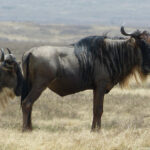Every year, thousands of elephants undertake a majestic migration across Tanzania’s Tarangire National Park. This event not only captivates wildlife enthusiasts but also presents an important opportunity to study these incredible creatures in their natural habitat. Elephants embark on this journey driven by the seasonal rains and scarcity of water, showcasing their remarkable memory and social structure.
The elephant migration in Tarangire occurs primarily between June and October, coinciding with the dry season. During this period, elephants congregate around the Tarangire River, which acts as a vital water source. This annual congregation can see up to 3,000 elephants at one time, making it an unparalleled spectacle for researchers and wildlife photographers alike.

Elephant Migration Patterns in Tarangire National Park
Elephants in Tarangire National Park follow a distinct seasonal migration pattern. This movement is primarily triggered by the dry and wet seasons. During the dry season, elephants move towards the Tarangire River, seeking vital water sources.
These migrations are essential for survival, as the elephants rely on the river’s water during dry months. Tens of thousands of elephants can be seen congregating around this area. Researchers can observe them closely, gaining insights into their behavior and social structures.
When the wet season arrives, elephants disperse throughout the park. They venture into areas rich with fresh vegetation and water. This dispersion helps them find more food and avoid over-concentration in one place.
The seasonal movements of elephants also impact other wildlife in Tarangire. Predators follow these large herds, benefitting from easier hunting opportunities. The migration creates a delicate balance in the ecosystem that supports various species.
Examining the Drivers behind Seasonal Movements
Understanding why elephants migrate seasonally is key to uncovering their survival strategies. The search for water is one of the primary drivers. During dry periods, water sources become scarce, forcing elephants to move to areas like the Tarangire River.
Another crucial factor is food availability. Elephants require large amounts of vegetation to sustain their massive bodies. Seasonal changes in vegetation growth compel them to migrate to regions with fresh and abundant foliage.
Social dynamics also play a role in migration. Elephants typically travel in herds led by experienced matriarchs. These leaders guide the herd based on their knowledge of the terrain and seasonal patterns.
Human activities influence elephant movements as well. Encroachment and habitat destruction limit their roaming spaces, causing shifts in traditional migration routes. Conservation efforts by organizations like Rolux Safaris aim to mitigate these impacts.
Optimal Timing for Witnessing Elephant Migration
The best time to witness elephant migration in Tarangire National Park is during the dry season, from June to October. During these months, elephants gather around the Tarangire River, which provides essential water. This gathering offers a remarkable opportunity for wildlife enthusiasts to observe them closely.
June marks the beginning of the migration period, but the peak spectacle occurs between August and September. At this time, large herds congregate, creating a breathtaking sight. Wildlife photographers and researchers benefit greatly from this concentration, capturing unique behaviors and interactions.
While October signals the end of the dry season, it remains an excellent time for viewing. Elephants are still present in significant numbers as they start their gradual dispersion. It’s vital to plan visits during these months to maximize chances of spotting elephants.
Visiting during the wet season can be challenging. Elephants tend to disperse throughout the park, making sightings less predictable. Therefore, Rolux Safaris recommends scheduling trips within the dry season for optimal viewing experiences.














